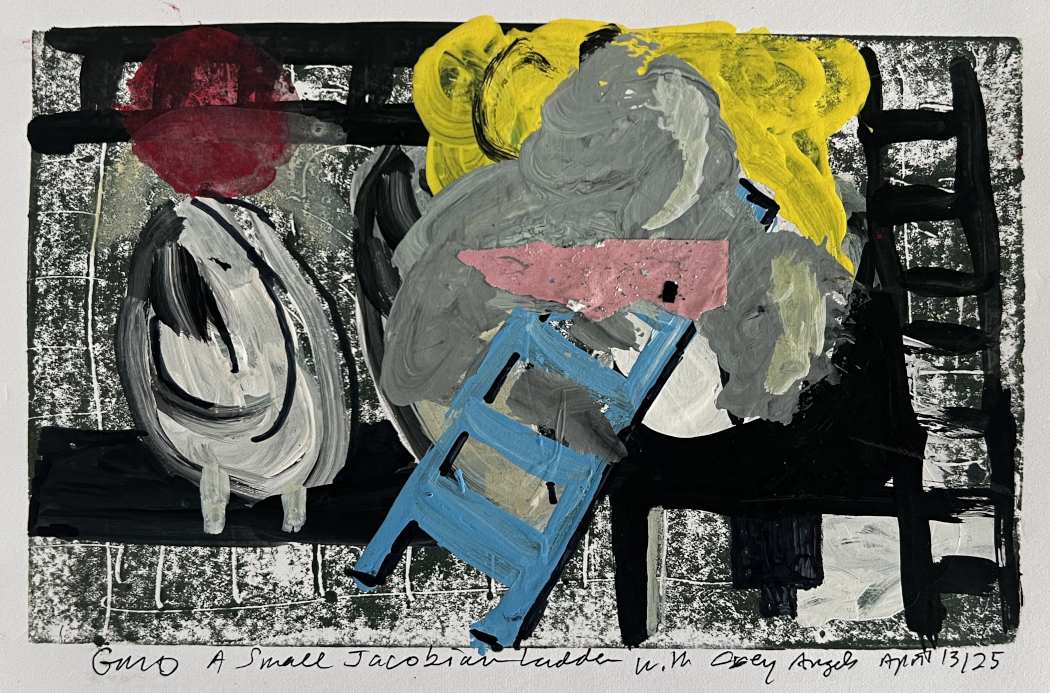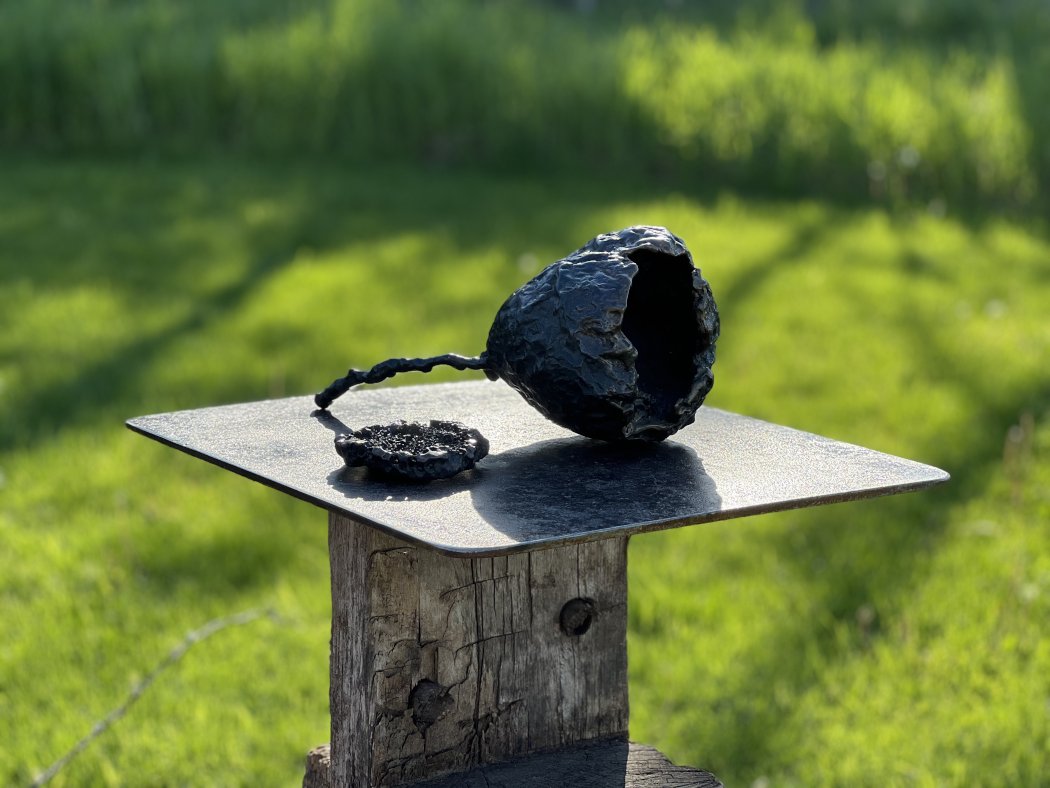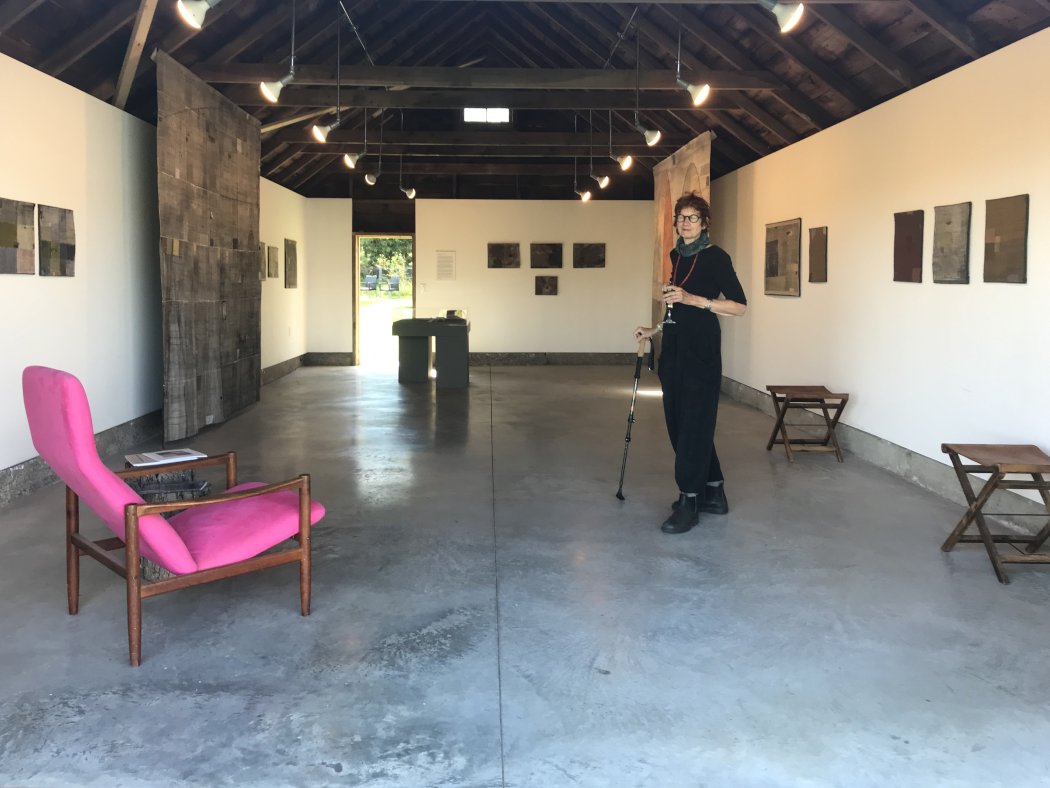Some time ago Grapevine’s editor Jeff Keary shared a piece he’d written on the difference between professional artists and hobby artists, those happy weekend creators often referred to as “Sunday painters.” That’s my phrase, not his. And while the phrase carries a bit of condescension, I don’t mean to rain on anyone’s parade. Whether someone picks up a brush, a mound of clay, or an acoustic guitar, the impulse to create is, at its core, human. And that’s worth a lot.
Still, the word “artist” is a slippery one. And even more slippery is the term “professional artist”.
“Professional Artist” is often invoked to draw a line between those who make art and sell, with those who make for personal or intrinsic value. But that binary falls apart quickly. Hobbyists can, and do, sell their work. Professionals can, and often do, go years without a show, without a sale, without recognition. So what are we really saying when we call someone a professional artist? That they’ve chosen art as a livelihood? That they have formal training? That they are “serious”? Each of these markers as murky as the next.

Given a lack of specificity with the word, we lose the richness of what it actually means to do art. The trained/practiced artist adds a suffix to their name, like painter, sculptor, composer, photographer, playwright, or filmmaker. These are words tied to practice, to discipline, to making. And crucially, they are all verbs: to paint, to sculpt, to compose, to write. The act of doing is central. And action is where meaning starts to take shape. Verbs are a declaration of being, of thinking, of intention. It’s the human part. And it’s in that doing, not the pay-check, not the gallery show, not the label, that one becomes, it is daily work that is both, of us, and later, the remains of us.
So what is good art? For that, I can refer to all the amazing Canadian artists Gary Michael Dault has written about over many decades, in recognition of their achievement. Printed here are a few pictures of the good work of a few artists, culled from my camera. I think GMD would agree these works represent the remains of considered action, of intentional doing, of “thinking and being”, to quote Martin Heidegger.
Working towards meaning – the moment in art school when the a professor asks, for the first time: “what is your intention?” Often, this is met with ‘I dunno.’ The why, the understanding bit, comes eventually (hopefully) after years of doing.
And what of the noun, artist – a growingly static and clumsy (insufficient?) moniker. To paint, to draw, to compose to arrange, all verbs. The student of art draws, sings, plays, runs.. and falls. Joy and youth, go together like violet and yellow, like grapes and cheese. From earth to grape-stem, from vine to juicy fruit, from the land to your table. Dionysian beauty abounds.

Art is transformative, for sure. So, how to begin making fine wine? I have no idea. But, I know that to paint means to draw, to sculpt means to carve, to compose means to improvise. Verbs upon verbs, endless. The body is designed to move, the hand and eye coordinated in one’s own fashion – your voice – what can you do with your body? And as it ages, slows down, disintegrates, why is it that some artists can still perform, sometimes at their best even when they are physically nearing the end.
Equity versus Equality in Art: Everyone should show their work, why not? If they want. There are many venues and places to do this. I love the cafe, like Jimmy and Tracy’s hot-spot in Warkworth, K-Okay Cafe; each month this most hospitable business mounts work culled from community. I don’t always LOVE the work, but I am frequently charmed and titillated! Speaking of bodily humour, I’m thinking of Gary Mulcahey’s recent revealing of a portrait series called “Clowns and Dolls” – his images of locals dressed up and dressed down – hung for the pleasure (and reported displeasure) of coffee connoisseurs and croissant cravers. As it turns out, the show drew controversy too. The Ontario Provincial Police were called in due to complaint, the artwork ‘reviewed’ and as expected, passed law-enforcement inspection! Obviously, not the most reliable source for what constitutes art.
We have public galleries and private galleries. Smaller public galleries have specific mandates, strategic plans, and spare budgets; they show work (usually) from the local/regional communities, reflecting the values determined by boards, directors and curators. Larger public institutions do the same, and much more; mandates reach out further to include national and international work. Unlike public institutions, commercial galleries are free to do whatever they want. There are no rules, other than the market place, a dubious method for quality discernment. And no codified standards of quality. The two types, public and private, function together. Two sides to the same culture. When functioning well, each doing what each does best, you get a kind of balance between the fleeting and the lasting, between the contemporary (what happens in the town square) and what is stored within the sacred halls of permanence, the publicly funded museum. Y et, sometimes this balance is less than parallel…ometimes we get it wrong. Oh well, in good time things find their place, for better or worse, the history of art is written and re-written. It changes with the passing of time.

These days, it seems everyone is re-connecting with their inner-child. Why are so many folks taking up the brush, the pen, the acoustic guitar? Before the advent of recorded music, and way before the digital proliferation of images, we relied on our own haptic skills to make things. Back then, one learned to play the piano, to read and write poetry, to correspond by hand. We read a lot more too. Twentieth century jobs mechanized our bodies and minds. As products replaced hand-made things, a collective loss ensued. These losses continue to mount, a quarter of the way through this century. The seeking-out of old technologies, of analogue ways, is a valiant attempt to fill in the blanks of a mechanically re-produced culture. From work-place to home, folks seek to re-establish connections between each other, and to share those experiences in coffee-shops, galleries, concert halls and museums. These spaces are where culture happens, high or low, modern or old-fashioned. It’s an opportune time to reclaim and reinvent ourselves, to locate and integrate fragmented space between body and mind.
Photos: Dorothy Caldwell, Greg Angus, Richard Watts, Gary Michael Dault.



